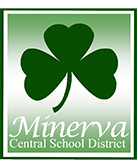What is Physical EDUCATION (PE)
By SHAPE America
Physical education is an academic subject and serves as the foundation of a CSPAP and, as such, demands the same education rigor as other core subjects. Physical education provides students with a planned, sequential, K-12 standards-based program of curricula and instruction designed to develop motor skills, knowledge, and behaviors for active living, physical fitness, sportsmanship, self-efficacy, and emotional intelligence.
During physical education, students practice the knowledge and skills they learn through physical activity, which is defined as any bodily movement that results in energy expenditure. Students also engage in exercise — any physical activity that is planned, structured, and repetitive — for the purpose of improving or maintaining one or more components of fitness (CDC, 2013, p. 8).
Physical education develops the physically literate individual through the deliberate practice of well-designed learning tasks that allow for skill acquisition in an instructional climate focused on mastery (SHAPE America, 2014, p. 10).
Physical education addresses the three domains of learning: cognitive or mental skills related to the knowledge of movement; affective, which addresses growth in feelings or attitudes; and psychomotor, which relates to the manual or physical skills related to movement literacy (SHAPE America, 2014, p. 4).
Physical education is an academic subject and serves as the foundation of a CSPAP and, as such, demands the same education rigor as other core subjects. Physical education provides students with a planned, sequential, K-12 standards-based program of curricula and instruction designed to develop motor skills, knowledge, and behaviors for active living, physical fitness, sportsmanship, self-efficacy, and emotional intelligence.
During physical education, students practice the knowledge and skills they learn through physical activity, which is defined as any bodily movement that results in energy expenditure. Students also engage in exercise — any physical activity that is planned, structured, and repetitive — for the purpose of improving or maintaining one or more components of fitness (CDC, 2013, p. 8).
Physical education develops the physically literate individual through the deliberate practice of well-designed learning tasks that allow for skill acquisition in an instructional climate focused on mastery (SHAPE America, 2014, p. 10).
Physical education addresses the three domains of learning: cognitive or mental skills related to the knowledge of movement; affective, which addresses growth in feelings or attitudes; and psychomotor, which relates to the manual or physical skills related to movement literacy (SHAPE America, 2014, p. 4).
Miss Carly Morano: M. Ed., CAPE
Physical Education and
Health Instructor
Courses Taught:
Phys Ed. PreK - K
Phys. Ed. 1-2
Phys. Ed. 3-4
Phys. Ed. 5-6
Phys. Ed. 7-8
Phys. Ed 9-10
Phys. Ed 11-12
Health 4
Health 5-6
Health 7
Health 10
